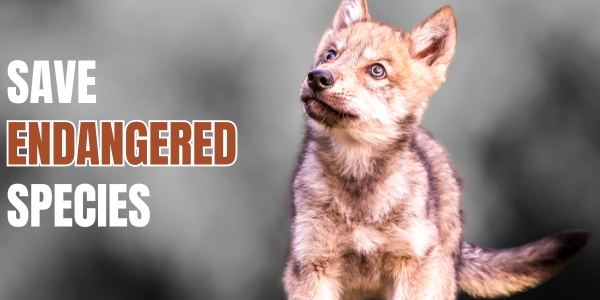Photo credit: Andrew Hollander
Gunnison’s prairie dog (Cynomys gunnisoni) | ESA status: none
Gunnison’s prairie dog
Gunnison’s prairie dogs live in interdependent colonies and communicate using a complex series of calls. Despite their many similarities to humans—they are social, intelligent animals with a sophisticated communication system—this species has been persecuted for decades.
Gunnison’s prairie dog habitat
The range of the Gunnison’s prairie dog includes the “Four Corners” region of Arizona, southwestern Colorado, northwestern New Mexico, and southeastern Utah.
Communication in the colony
Gunnison’s prairie dogs live in family groups called clans, organized into colonies with their neighbors. Their use a complex series of calls to warn each other of predators, such as the coyote, badger, golden eagle, and ferruginous hawk. The prarie dogs have specific calls for specific predators, and each call elicits a different escape response or behavior.
A keystone species
Gunnison’s prairie dogs are considered a keystone species because of the important role they play in their grassland habitat: as well as (unwillingly) providing meals for predators including the endangered black-footed ferret, they dig burrows that host a variety of other animals, including snakes, cottontail rabbits, burrowing owls, beetles, and salamanders, to name a few. Their burrowing behavior turns and aerates the soil and increases water penetration into the ground.
Gunnison’s prairie dog fun facts
Slow multiplier
Female Gunnison’s prairie dogs are receptive to mating for only one day a year. They have one litter of three to four pups per year; typically, only half of these survive to adulthood.
Heavy sleeper
Gunnison’s prairie dogs enter “torpor” in the winter—they curl up and drop their body temperatures to between 41 and 59 degrees Fahrenheit. Their muscles lock and they remain motionless for up to eight days, waking up and moving about their burrows for a day before repeating the cycle.
What are the threats to Gunnison’s prairie dogs?
This intelligent, social, and important animal occupies a tiny fraction of its former range. In 1916, Gunnison’s prairie dog colonies stretched across 24 million acres of the Great Plains. Now, the prairie dogs occupy fewer than 500,000 acres, a decline of almost 98 percent. Mass extermination efforts, federally orchestrated on behalf of the livestock industry, jump-started the prairie dogs’ decline. Currently, they are under siege from introduced sylvatic plague, rampant oil and gas drilling, shooting, poisoning, urban sprawl, and other perils.
What WildEarth Guardians is doing to save the Gunnison’s prairie dog
We are working hard to preserve the Gunnison’s prairie dog. In the past decade, we have fought political interference and misuse of the scientific process in Endangered Species Act decisions. In 2013, the U.S. Fish and Wildlife Service denied Endangered Species Act protection to the Gunnison’s prairie dog, and we are currently working to create local management plans that reduce or eliminate lethal control of this important species.
Historical Significant Actions
“Report from the Burrow 2017: Forecast of the Prairie Dog” (report) February 2017
“Report from the Burrow 2016: Forecast of the Prairie Dog” (report) February 2016
“Report from the Burrow 2015: Forecast of the Prairie Dog” (report) February 2015
“Report from the Burrow 2014: Forecast of the Prairie Dog” (report) February 2014
U.S. Fish and Wildlife Service finds the Gunnison’s prairie dog “not warranted” for listing November 2013
“Report from the Burrow 2013: Forecast of the Prairie Dog” (report) February 2013
“Report from the Burrow 2012: Forecast of the Prairie Dog” (report) February 2012
Gunnison’s prairie dog included in landmark settlement with the U.S. Fish and Wildlife Service May 2011
“Report from the Burrow 2011: Forecast of the Prairie Dog” (report) February 2011
“Report from the Burrow 2010: Forecast of the Prairie Dog” (report) February 2010
“Report from the Burrow 2009: Forecast of the Prairie Dog” (report) February 2009
“Report from the Burrow 2008: Forecast of the Prairie Dog” (report) February 2008
WildEarth Guardians files petition to list Gunnison’s prairie dog under the ESA February 2004
Wildlife Press: Gunnison’s prairie dog
USDA’s Wildlife Services continued its reckless slaughter of coyotes, bears, and wolves in 2020
While overall less native wildlife was killed by Wildlife Services in 2020, native carnivore killing remained rampant
Read more >